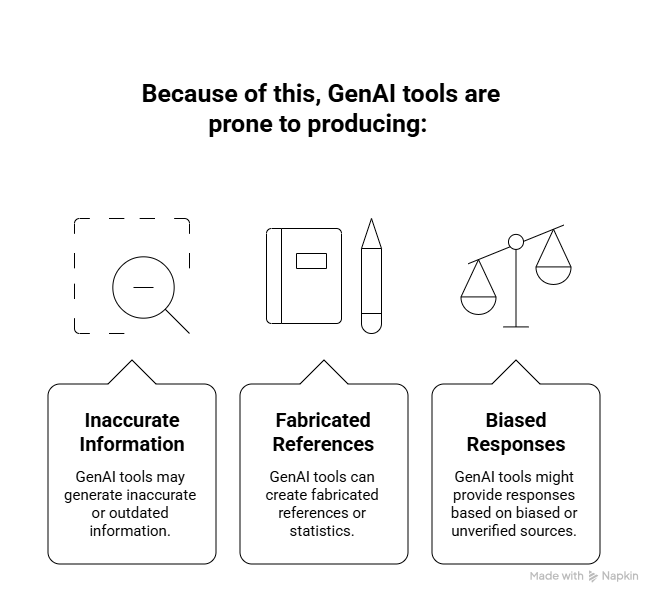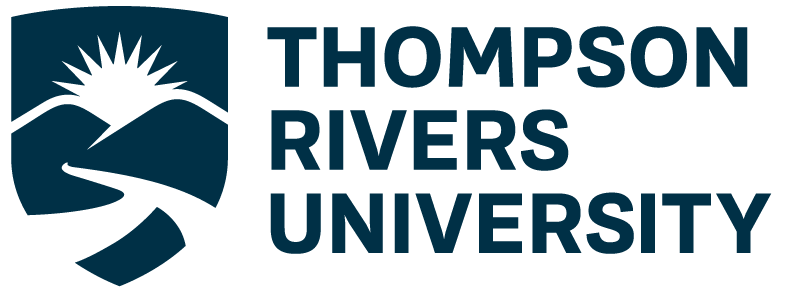Can it make mistakes?
Overview: Keeping academic integrity top of mind
When considering using AI in your classes, students are responsible for:
- Understanding their instructor’s position on GenAI use
- Learning how it may/may not be used for each assignment
- Seeking clarification when needed.
If you have any questions or doubts about how to appropriately use GenAI in your assignments or other academic work, always contact your course instructor or graduate supervisor for clarification.
Your responsibility: accuracy and fact-checking
GenAI tools, such as ChatGPT or Copilot, are designed to generate text by identifying and reproducing patterns in large datasets. They do not possess a factual understanding of the world, nor do they have access to real-time information (unless explicitly connected to live databases).

These issues are often referred to as hallucinations — instances where the AI generates information that is either entirely false, partially fabricated, or misleadingly framed. In some cases, misinformation (false information shared without harmful intent) or disinformation (false information with the intent to deceive) can also be embedded into responses based on the nature of the data the AI was trained on.
As a university student, you are expected to evaluate and verify any information used in your academic work — whether it originates from a scholarly database, a textbook, or a Gen AI tool. You should also indicate the source of content, including text, code or images generated by AI-enabled tools per evolving scholarly norms for citation and attribution. This will ensure clarity regarding the source for future reference.
Your responsibility includes:
- Critically assessing the accuracy and credibility of AI-generated responses
- Cross-referencing claims against reliable and peer-reviewed sources
- Understanding the limitations of AI tools as non-expert systems
- Attribution or statement of use of AI-enabled tools for content generation
Relying solely on Gen AI content without fact-checking undermines academic integrity and can contribute to the spread of misinformation.
Beware of bias
Generative AI tools are trained on large-scale datasets that reflect the content and biases of the internet and broader cultural production. As a result, AI outputs may reinforce:
These problematic patterns are not intentional, but they are deeply embedded in the data. Understanding this helps you recognize the importance of taking responsibility to ensure issues are not replicated.
Content Attribution
University of Toronto. (2025). Coursework and GenAI: A Practical Guide for Students. Innovation in Digital Learning, Information Technology Services. https://ocw.utoronto.ca/innovation-projects/genai-literacy-course-modules/
This section refers to the content of the module “Evaluate: Academic Integrity”


